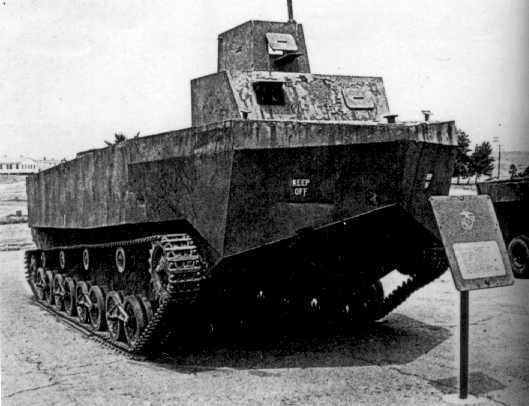Weight 16 tons Width 4 m | Designed 1942–1943 Length 11 m Height 2.25 m | |
 | ||
The special Type 4 Launch Ka-Tsu (特四式内火艇 カツ, toku-yon-shiki uchibitei Ka-Tsu) was a Japanese amphibious landing craft of World War II. The first prototype was completed in late 1943 and trials were conducted off Kure in March 1944.
Contents
History
Japan's combat experience in the Solomon Islands in 1942 which revealed the difficulty of resupplying Japanese forces in such situations prompted the IJN to commence an amphibious tractor program in 1943, as the Ka-Tsu, which was designed by Commander Hori Motoyoshi of the Kure Naval Yard.
The Ka-Tsu's primary purpose was to transport cargo and/or troops ashore. It was unarmored apart from some light shielding for the crew. Its engine compartment and electric final drives were hermetically sealed, as it was intended to be launched from a submarine. The twin drive propeller shafts were designed to retract "into their ducts" once the vehicle reached the beach.
The first prototype was completed in late 1943 and trials were conducted off Kure in March 1944. By the time that development had been completed, it was proposed that the Ka-Tsu be used to attack US battleships anchored in atolls (such as Ulithi) which could not readily be attacked using conventional means. It was proposed that a Ka-Tsu armed with a pair of torpedoes be dropped off by submarine away from the atoll, propel itself to the outer reef using its tracks, and then enter the lagoon on the inside of the reef. Tests were successfully carried out on a modified Ka-Tsu but the war ended before any such mission could be mounted and the Ka-Tsu deployed in combat.
Operation Yu/Tatsumaki
As part of the proposed Operation Yu (雄作戦, Yū sakusen), a Pearl Harbor–style surprise attack raid on American shipping at Majuro atoll, five IJN submarines - I-36, I-38, I-41, I-44, and I-53 - were to be modified to allow each to carry four torpedo-armed Ka-Tsu vehicles (Operation Tatsumaki (竜巻作戦, Tatsumaki sakusen)). Initial landing trials, however, revealed deficiencies of the Ka-Tsu, most of which were caused by its underpowered engine. In addition, after the carrying submarine surfaced, it was found that at least 20 minutes were necessary to remove the Ka-Tsu's watertight engine covers and launch the tank.
Full-scale landing trials were carried out with a submarine carrying two Ka-Tsus. These tests revealed that the Ka-Tsus were noisy, very slow in the water, and their tracks tended to slip if they encountered even the slightest obstacles. In addition, it was also discovered that their engine compartments would not stay completely watertight; the covers would leak underwater, eventually leading to water in the vehicle's entire engine section. In response to these criticisms, the Ka-Tsu's designer pointed out he had been asked to design a "pure” amphibian which was suited to neither underwater transport nor carrying a pair of full size torpedoes (each of which weighed one ton).
